Papers by Milagros Macias Lopez
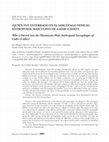
ZEPHYRUS, 2021
Resumen: El descubrimiento casual del sarcófago antropomorfo sidonio en 1887 despertó una gran
ex... more Resumen: El descubrimiento casual del sarcófago antropomorfo sidonio en 1887 despertó una gran
expectación tanto entre la población y las autoridades gaditanas como en los especialistas contemporáneos, hasta
el punto de que fueron muchos los investigadores que se interesaron por su estudio, así como por el del esqueleto
hallado en su interior, aunque nunca se dudó que correspondiera a un varón como presagiaba la representación
esculpida en su tapa. Nuestro objetivo con este trabajo es demostrar, por una parte, que la exhibición del
esqueleto y los continuos traslados de la pieza provocaron el deterioro irremediable de los restos –del que dan
cuenta los estudiosos del momento– y la sustitución de los huesos originales por otros. En segundo lugar,
intentaremos determinar el sexo del individuo inhumado mediante el análisis de las fotografías tomadas durante
la apertura del féretro y de los primeros estudios antropológicos llevados a cabo en los años inmediatamente
posteriores a su hallazgo, antes del reemplazo del esqueleto. A pesar de las dificultades, creemos que contamos
con datos suficientes para proponer que, frente a la idea generalizada, los restos originales podrían corresponder
a un individuo de sexo femenino.
Palabras clave: fenicios occidentales; tafonomía funeraria; antropología física; determinación del sexo;
determinación de la edad; paleopatología.
Abstract: The unexpected discovery of the Sidonian anthropomorphic sarcophagus in 1887 raised great
expectation among the population and the authorities of Cadiz, as well as contemporary specialists. Thus,
many researchers became interested in the study of both the sarcophagus and the skeleton found inside. The
skeleton was presumed to be male as the representation sculpted on its lid presaged. The purpose of this work
is to evidence that the exhibition of the skeleton and the piece’s continuous transfers caused the irremediable
deterioration of the remains over time as it was reported by scholars and the replacement of the original bones
for others. Additionally, we aim to determine the sex of the buried individual by analyzing photographs taken
during the coffin opening and the first anthropological studies carried out in the immediate years after the
discovery before the replacement of the skeleton. Despite the difficulties, we believe to have enough evidence to
propose that, in contrast to the widespread perception, the original remains could correspond to an individual
of the female sex.
Key words: Western Phoenicians; Funerary Taphonomy; Physical Anthropology; Sex Determination; Age
Determination; Paleopathology
RESUMEN: Hacemos un breve recorrido por las diversas actuaciones arqueologicas llevadas a cabo en... more RESUMEN: Hacemos un breve recorrido por las diversas actuaciones arqueologicas llevadas a cabo en el yacimiento fenicio de Las Chorreras desde la decada de los 70 del pasado siglo XX hasta hoy. Presentamos el ultimo trabajo realizado, consistente en la documentacion de un enterramiento del siglo VIII a.C. en pozo simple, del que solo se conserva un nicho-camara lateral, excavado en la roca virgen (pizarra), con rito de incineracion en urna, que uso como contenedor un anfora de tipologia centro-mediterranea, con restos oseos de dos individuos. PALABRAS CLAVE: Las Chorreras, enterramiento, incineracion, ajuar, fenicio, siglo VIII a.C.

espanolEn este trabajo presentamos los resultados del estudio bioantropologico de un esqueleto de... more espanolEn este trabajo presentamos los resultados del estudio bioantropologico de un esqueleto del siglo III- IV d. C. hallado en San Fernando (Cadiz). Se trata de una mujer en estado de gestacion de 25-30 anos de edad que presenta varias patologias poco descritas en la literatura paleopatologica en Espana. Algunas de ellas, como las malformaciones a nivel de la columna vertebral fueron evidentes en la inspeccion macroscopica, pero otras, como las patologias otologicas fueron futo de un descubrimiento casual al investigar radiologicamente una lesion benigna en el craneo. Por otro lado, no es fecuente la publicacion de casos de mujeres fallecidas durante el estado de gestacion ni realizar la reconstruccion del rostro tras el estudio bioantropologico de los restos esqueleticos. EnglishThis work provides the results of the bioanthropological study about a skeleton from the 3rd-4th century AD found in San Fernando (Cadiz). It is a 25-to-30-year-old pregnant woman with several pathologie...
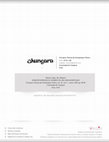
Chungará (Arica), 2000
Se estudia a una niña momificada por causas naturales de unos 5 años de edad, la cual presentaba ... more Se estudia a una niña momificada por causas naturales de unos 5 años de edad, la cual presentaba a la inspección macroscópica una "postura antiálgica". Los estudios radiológicos y tomográficos muestran varias anomalías de carácter genético del hombro derecho y hemitórax del mismo lado compatibles con una Enfermedad de Sprengel. Además se demuestran otras lesiones de posible carácter traumático, que nos hacen pensar en una luxación anterosuperior concomitante a las circunstancias de la muerte. Se propone como posible causa de ambas, la instauración de un status epiléptico. Palabras claves: Dismorfogénesis de hombro, luxación anterosuperior de hombro, enfermedad de Sprengel, momia, paleopatología, convulsiones. A mummified girl of five years old is analyzed in this report. She shows an antialgesic position. The radiologic and CAT examination revealed several genetic anomalies on the right shoulder and hemithorax of the same side. All of them are compatible with Sprengel's disease. Likewise we identified a right shoulder dislocation which was likely produced at the time of death. We propose an epileptic status as a possible cause for both of them.
Paleopatologia Ciencia Multidisciplinar 2011 Isbn 978 84 938635 0 0 Pags 167 178, 2011
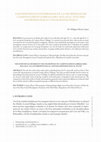
Los individuos enterrados en La necrópoLis de campos eLíseos (GibraLfaro, máLaGa). estudio antrop... more Los individuos enterrados en La necrópoLis de campos eLíseos (GibraLfaro, máLaGa). estudio antropoLóGico y paLeopatoLóGico M.ª Milagros Macías Lópezi resumen: Se presentan los resultados del estudio de tres individuos del siglo VI a. C. y diez del siglo II-I a. C. de la necrópolis fenopúnica de Campos Elíseos (Málaga). Los mismos han aportado datos valiosos para un mejor conocimiento de la sociedad fenopúnica malagueña. Además se han identificado patologías poco frecuentes como meningioma craneal, fractura de la rama púbica del coxal, neoplasia del paladar duro o hipoplasia de la apófisis mastoides. La comparación de este grupo fenopúnico con otro de Gadir, ha evidenciado importantes diferencias en los rituales funerarios que estarían relacionados con grupos poblacionales distintos o de tradiciones funerarias muy diferentes. paLabras cLave: Campos Elíseos, Fenopúnicos, Paleopatología, Decúbito lateral derecho, Fractura rama pú-bica del coxal, Meningioma craneal, Neoplasia del paladar duro, Hipoplasia de la apófisis mastoides. the individuaLs buried in the necropoLis of campos eLíseos (GibraLfaro, máLaGa). an anthropoLoGicaL and paLeopathoLoGicaL study abstract: Presents the results of the study of three individuals from the 6 th century BC and ten of the 2 nd-first century BC phoenopunian necropolis Campos Elíseos (Málaga). They have provided valuable data for a better understanding of the phoenopunian society of Málaga. In addition identified rare diseases such as cranial meningio-ma, fracture of the pubic ramus of the hip, neoplasia of the hard palate or hypoplasia of the mastoid process. The comparison of this with another of Gadir's phoenopunian group has shown important differences in funeral rituals that would be related to different population groups or different funeral traditions. Key Words: Campos Elíseos, Phoenopunian, Paleopathology, Right Lateral Decubitus, Fracture of Pubic Ra-mus of the Hip, Cranial Meningioma, Neoplasia of the Hard Palate, Hypoplasia of the Mastoid Process. i. introducción Una de las ciudades fundadas por los navegantes fenicios en sus viajes por el Mediterráneo occidental fue Malaka, la actual Málaga, situada en una amplia bahía dominada por el monte Gibralfaro 1. Las intervenciones arqueológicas realizadas en él durante los últimos años, han constatado la impor-tancia de este enclave fenicio, en torno a dos focos principales localizados en las desembocaduras de los Ríos Guadalhorce, donde se localizan los tempranos asentamientos del Cerro del Villar y La Rebanadilla, y del Río Guadalmedina, donde se sitúa la propia Malaka 2. i Paleopatóloga. mamilama@yahoo.es. 1 MARTÍN RUIZ, J. A. y PÉREZ-MALUMBRES A. (1999): 15. 2 ARANCIBIA et al. (2011): 129.
This report concerns a case of mandible quistic lesion found in a skeleton from Cádiz (South of S... more This report concerns a case of mandible quistic lesion found in a skeleton from Cádiz (South of Spain) from
fenicio-púnico age. An adult man showed a little hole on inner cortical bone in the left mandible body The
ortopantonoramic X-rays films showed a big cavity in the inner with the sponjoso tissue destroyed. There is not
bony reaction around the lesion. Otherpathologies founded in this individual were: cribra orbitalia, lumbar arthrosis
and enamel hypoplasia. This individual showed also, aortic impression in sixth to eleventh dorsal vertebrae.
The utility ot CT imaging in the evaluation ot paleo-otopathology is discused. We have made CT-sc... more The utility ot CT imaging in the evaluation ot paleo-otopathology is discused. We have made CT-scanning in
10 temporal-bone otindividuals trom Cádiz (South ot Spain), dated in century IV-1/ B. C. AII examined CTshowed
some degree ot pathology such as one case ot cholesteatoma, tour cases ot chronic otitis media, one case ot
aplasia ot the middle ear and one case ot exostosis ot the external auditory canal. CT- tindings and procedure
are discused.
An adult male skull dated from the 2nd Century B. C. is analysed in this reporto It was excavated... more An adult male skull dated from the 2nd Century B. C. is analysed in this reporto It was excavated from the site
of the Teatro Andalucía necropolis, Cádiz, Spain. A Iytic lesion in the right parietal bone was determined as the
most relevant defect according to macroscopical, mesoscopicalandradiological examinations. Studyin the pattern
(morphology and distribution) as well as sex and age, it strongly reveals a case of eosinophilic granuloma as the
most likely diagnosis.
Likewise, photographs with transillumination are suggested as a very usefuI technic to gather documentary
evidence on non-perforating osteal defects.
This report concerns a case of rib osteosarcoma and possible cromosomopathic found in a skeleton ... more This report concerns a case of rib osteosarcoma and possible cromosomopathic found in a skeleton from
Cádiz in 1995, from 11 a. C. A young adult man showed a tumorous bone proliferation with a coral-Iike appearance
at the body area of the seventh right ribo A profusion of coalescing bone was extended to the surrounding space.
X-ray films revealed spotted and the «sunburst appearance» in the lesion. TAC films showed a radial channels
andsclerosis into the marrow space. Treating computer of the X-ray films revealed is a 100% a osteosarcoma. In
addition, this individual show craneal anathomic characteristics belonging to cromosomopathic. Actually it is
Know that twenty per cent of solid tumours are joined to cromosomopathic.
The antropological study of five burnt burials, coming from Cádiz necropolis fenopunique period, ... more The antropological study of five burnt burials, coming from Cádiz necropolis fenopunique period, has allowed to know the remains of four individuals in a same urn, which we have analyzed like a family group. Only a 4-5 years old girl conyained trousseau of jewellerys. A vertebral fracture was diagnosed in a young man and degenerative arthropaty and cribra orbitalia in a fifty year old man. Two new-born in the same burial that, probably, two young women, can be analized like perimortem death.
Three cases of atresia of the external acoustic meatus is presented from a population from Cádiz ... more Three cases of atresia of the external acoustic meatus is presented from a population from Cádiz ( South
of Spain) dated in century 11I and 11 B. C. Temporal bones displayed a complete abscense of the external acoustic
meatus. In two of them is observed alterations on glenoid cavity, probably due to maloclusion for malformation
of mandible. This condition is compatible with a Treacher-Collins Sindrom.
A mummified girl of five years old is analyzed in this report. She shows an
antialgesic position.... more A mummified girl of five years old is analyzed in this report. She shows an
antialgesic position. The radiologic and CAT examination revealed several
genetic anomalies on the right shoulder and hemithorax of the same side. All of them are compatible with
Sprengel's disease. Likewise we identified a right shoulder dislocation which was likely produced at the time of
death. We propose an epileptic status as a possible cause for both of them.
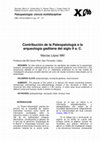
Contribución de la Paleopatología a la arqueología gaditana del siglo II a. C. Macías López MM Pr... more Contribución de la Paleopatología a la arqueología gaditana del siglo II a. C. Macías López MM Profesora del IES Sancti Petri (San Fernando, Cádiz) RESUMEN. En este artículo se presentan los resultados del análisis de la arqueología funeraria, antropología y paleopatología de dos necrópolis gaditanas (una intramuros y otra extramuros) datadas en el siglo II a. C., hallándose evidencias en los tres niveles de investigación de grupos sociales distintos así como de rituales funerarios relacionados con la enfermedad. PALABRAS CLAVE: palepoatología, necrópolis gaditana, ritual funerario SUMMARY. The purpose of this article is to discuss the results concerning funerary archaeology, anthropology and paleopathology analysis of two necropolis in Cádiz, one intramural and other extramural, dated in II BC century, in which were found evidences of different social and funerary rituals in relation to diseases. INTRODUCCIÓN La "Nueva Arqueología" plantea por primera vez la necesidad del registro sistemático funerario como fuente de información privilegiada sobre la estructura social y la cultura, yendo más allá de los tradicionales enfoques descriptivos, constituyendo la génesis de lo que hoy se denomina "Arqueología de la Muerte" o "Arqueología Funeraria" que considera al documento funerario como un producto material de la acción social, incluso en lo que se refiere a la información paleodemográfica y paleopatológica, dos rasgos de la mortalidad aparentemente independientes de la intencionalidad del ritual funerario (Vicent, 1995,15-16). En el trabajo que a continuación se expone se ha tenido en cuenta este enfoque siendo su objetivo conocer los resultados que podrían obtenerse al aplicar un modelo de investigación integral a las estructuras funerarias, comparando
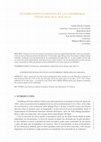
Antropóloga RESUMEN: Hacemos un breve recorrido por las diversas actuaciones arqueológicas llevad... more Antropóloga RESUMEN: Hacemos un breve recorrido por las diversas actuaciones arqueológicas llevadas a cabo en el yacimien-to fenicio de Las Chorreras desde la década de los 70 del pasado siglo XX hasta hoy. Presentamos el último trabajo realizado, consistente en la documentación de un enterramiento del siglo VIII a.C. en pozo simple, del que sólo se conserva un nicho-cámara lateral, excavado en la roca virgen (pizarra), con rito de incineración en urna, que usó como contenedor un ánfora de tipología centro-mediterránea, con restos óseos de dos individuos. PALABRAS CLAVE: Las Chorreras, enterramiento, incineración, ajuar, fenicio, siglo VIII a.C. A PHOENICIEN BURIAL FOUND IN LAS CHORRERAS (VÉLEZ-MÁLAGA. MÁLAGA) ABSTRACT: After a quick view over the various archaelogical works carried out at the Phonicien settlement of Las Chorreras from the 1970s to this day, this paper shows the latest report of the place: an 8 th C.B.C burial, hollowed out of slate stone,-a cremation in urn ritual, with a Middle Mediterranean type amphora containing the osseous remains of two individuals. El hallazgo del enterramiento fenicio que aquí exponemos se produjo en el mes de agosto de 2003, como consecuencia de la ampliación de un vial en la urbanización Cerro y Mar, en la colina de Las Chorreras, costa oriental de Vélez-Málaga (Fig.1). Si bien el vial iba a tener una mínima afección sobre el subsuelo, pues se ensanchaba 1 m por unos 0,50 m de profundidad, desde el departamento de Patrimonio Histórico Artístico del Excmo. Ayto. de Vélez-Málaga decidimos llevar a cabo una inspección, ante el gran interés arqueológico del lugar. Con la remoción de tierras quedó al descubierto parte de un nicho lateral donde se había depositado una incineración. La boca de entrada al mismo fue destruida por la pala mecánica, lo que también ocasionó la pérdida de restos del ánfora usada como contenedor de las cenizas y parte del ajuar que acompañaba a los muertos. Pero el enterramiento se puso al descubierto de una forma poca defi nida, pues el nicho quedaba oculto por la tierra removida, y sólo escasos fragmentos de las distintas vasijas presentes en el perfi l del corte advertían de su existencia.
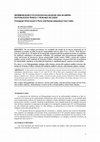
RESUMEN: En este trabajo presentamos los resultados del estudio de los huesos temporales de 33 in... more RESUMEN: En este trabajo presentamos los resultados del estudio de los huesos temporales de 33 individuos excavados en Cádiz, de épocas comprendidas entre los siglos V a.C. y VI d.C.; 26 de ellos per-tenecen al siglo II a.C. El empleo de la tomografía computerizada ha permitido descartar y/o confirmar los hallazgos radiológicos previamente realizados. Las patologías más frecuentemente halladas, en orden decreciente de frecuencia, fueron otomastoiditis media crónica (OMC), atresia del conducto auditivo externo (CAE) (síndrome de Treacher-Collins), colesteatoma y exóstosis del CAE. La incidencia de enfermedades otológicas en la población femenina es significativamente superior a la masculina. PALABRAS CLAVE: Paleopatología, otología, otitis crónica, atresia del conducto auditivo externo, sín-drome de Treacher-Collins, exóstosis del conducto auditivo externo, colesteatoma, púnico, romano. ABSTRACT: In this article is presented the research about otologic diseases from temporal-bones of 33 individuals, dated between century V a.C. and VI d.C. All of then were examinated with conventional radiologic. The TC-scanning allowed to confirm and/or to discard the X-ray pahological images. The diseases finded were: chronic otitis media, external acoustic meatus atresia (Treacher-Collins sindrom), cholesteatoma and exostosis of the external auditory canal. The incidence of otologic diseases were very high in the female population. KEY WORDS: Paleopathology, ear diseases, chronic otitis media, external acoustic meatus atresia (Trea-cher-Collins sindrom), cholesteatoma, exostosis of the external auditory canal, Punic, Roman. INTRODUCCIÓN La mayoría de las referencias en Paleopatología acerca de las enfermedades otológicas se han cir-cunscrito a los efectos de las enfermedades inflamatorias sobre la porción mastoidea, ya sea identificando macroscópicamente orificios de fistulización o mediante estudio radiológico simple, puesto que, mediante proyecciones sencillas, se puede visualizar aceptablemente, sin la superposición de la compleja estructura ósea del hueso temporal. La importancia del empleo de la tomografía computerizada (TC) en Paleopatología ha sido señalada por algunos autores (1). Sin embargo, su utilización en la esfera de la Paleopatología otológica no ha sido muy profusa (2). La TC permite obviar la superposición de estructuras y, además, muestra una escala de densidades muy superior a la radiología convencional. Estas características de la TC permiten obtener imágenes níti-das del interior de cavidades cerradas como las alojadas en el peñasco del temporal. De esta manera, al ob-viar las superposiciones se evitan imágenes falsamente patológicas y se consigue, en muchas ocasiones, un diagnóstico más exacto (3). MATERIALYMÉTODO Los restos humanos que forman parte de nuestro estudio son adultos, todos ellos procedentes de las siguientes excavaciones de urgencia:
Cuidar, curar, morir: la enfermedad leída en los huesos Care, heal, die: the disease read in the ... more Cuidar, curar, morir: la enfermedad leída en los huesos Care, heal, die: the disease read in the bones MARÍA PAZ DE MIGUEL IBAÑEZ ALEJANDRO ROMERO RAMETA PALMIRA TORREGROSA GIMÉNEZ
IES Sancti Petri (San Fernando, Cádiz).
n ú m e r o 2 0 (2 0 0 9) En este artículo se presentan los resultados del análisis de la arqueol... more n ú m e r o 2 0 (2 0 0 9) En este artículo se presentan los resultados del análisis de la arqueología funeraria, antropología y paleopatología de dos necró-polis gaditanas (una intramuros y otra extramuros) datadas en el siglo II a.C., hallándose evidencias en los tres niveles de investiga-ción de grupos sociales distintos. palabras clave: abstraCt the purpose of this article is to discuss the results of the fu-neray arqueology, anthropology and paleopathology analysis of two necropolis in Cádiz, one inwall and other outwall, dated in II b.C. century, finding evidence of different social groups in the three levels of this rearching.

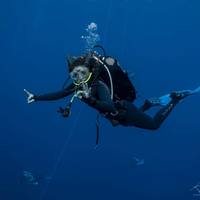
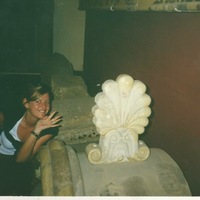






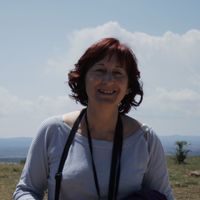

Uploads
Papers by Milagros Macias Lopez
expectación tanto entre la población y las autoridades gaditanas como en los especialistas contemporáneos, hasta
el punto de que fueron muchos los investigadores que se interesaron por su estudio, así como por el del esqueleto
hallado en su interior, aunque nunca se dudó que correspondiera a un varón como presagiaba la representación
esculpida en su tapa. Nuestro objetivo con este trabajo es demostrar, por una parte, que la exhibición del
esqueleto y los continuos traslados de la pieza provocaron el deterioro irremediable de los restos –del que dan
cuenta los estudiosos del momento– y la sustitución de los huesos originales por otros. En segundo lugar,
intentaremos determinar el sexo del individuo inhumado mediante el análisis de las fotografías tomadas durante
la apertura del féretro y de los primeros estudios antropológicos llevados a cabo en los años inmediatamente
posteriores a su hallazgo, antes del reemplazo del esqueleto. A pesar de las dificultades, creemos que contamos
con datos suficientes para proponer que, frente a la idea generalizada, los restos originales podrían corresponder
a un individuo de sexo femenino.
Palabras clave: fenicios occidentales; tafonomía funeraria; antropología física; determinación del sexo;
determinación de la edad; paleopatología.
Abstract: The unexpected discovery of the Sidonian anthropomorphic sarcophagus in 1887 raised great
expectation among the population and the authorities of Cadiz, as well as contemporary specialists. Thus,
many researchers became interested in the study of both the sarcophagus and the skeleton found inside. The
skeleton was presumed to be male as the representation sculpted on its lid presaged. The purpose of this work
is to evidence that the exhibition of the skeleton and the piece’s continuous transfers caused the irremediable
deterioration of the remains over time as it was reported by scholars and the replacement of the original bones
for others. Additionally, we aim to determine the sex of the buried individual by analyzing photographs taken
during the coffin opening and the first anthropological studies carried out in the immediate years after the
discovery before the replacement of the skeleton. Despite the difficulties, we believe to have enough evidence to
propose that, in contrast to the widespread perception, the original remains could correspond to an individual
of the female sex.
Key words: Western Phoenicians; Funerary Taphonomy; Physical Anthropology; Sex Determination; Age
Determination; Paleopathology
fenicio-púnico age. An adult man showed a little hole on inner cortical bone in the left mandible body The
ortopantonoramic X-rays films showed a big cavity in the inner with the sponjoso tissue destroyed. There is not
bony reaction around the lesion. Otherpathologies founded in this individual were: cribra orbitalia, lumbar arthrosis
and enamel hypoplasia. This individual showed also, aortic impression in sixth to eleventh dorsal vertebrae.
10 temporal-bone otindividuals trom Cádiz (South ot Spain), dated in century IV-1/ B. C. AII examined CTshowed
some degree ot pathology such as one case ot cholesteatoma, tour cases ot chronic otitis media, one case ot
aplasia ot the middle ear and one case ot exostosis ot the external auditory canal. CT- tindings and procedure
are discused.
of the Teatro Andalucía necropolis, Cádiz, Spain. A Iytic lesion in the right parietal bone was determined as the
most relevant defect according to macroscopical, mesoscopicalandradiological examinations. Studyin the pattern
(morphology and distribution) as well as sex and age, it strongly reveals a case of eosinophilic granuloma as the
most likely diagnosis.
Likewise, photographs with transillumination are suggested as a very usefuI technic to gather documentary
evidence on non-perforating osteal defects.
Cádiz in 1995, from 11 a. C. A young adult man showed a tumorous bone proliferation with a coral-Iike appearance
at the body area of the seventh right ribo A profusion of coalescing bone was extended to the surrounding space.
X-ray films revealed spotted and the «sunburst appearance» in the lesion. TAC films showed a radial channels
andsclerosis into the marrow space. Treating computer of the X-ray films revealed is a 100% a osteosarcoma. In
addition, this individual show craneal anathomic characteristics belonging to cromosomopathic. Actually it is
Know that twenty per cent of solid tumours are joined to cromosomopathic.
of Spain) dated in century 11I and 11 B. C. Temporal bones displayed a complete abscense of the external acoustic
meatus. In two of them is observed alterations on glenoid cavity, probably due to maloclusion for malformation
of mandible. This condition is compatible with a Treacher-Collins Sindrom.
antialgesic position. The radiologic and CAT examination revealed several
genetic anomalies on the right shoulder and hemithorax of the same side. All of them are compatible with
Sprengel's disease. Likewise we identified a right shoulder dislocation which was likely produced at the time of
death. We propose an epileptic status as a possible cause for both of them.
expectación tanto entre la población y las autoridades gaditanas como en los especialistas contemporáneos, hasta
el punto de que fueron muchos los investigadores que se interesaron por su estudio, así como por el del esqueleto
hallado en su interior, aunque nunca se dudó que correspondiera a un varón como presagiaba la representación
esculpida en su tapa. Nuestro objetivo con este trabajo es demostrar, por una parte, que la exhibición del
esqueleto y los continuos traslados de la pieza provocaron el deterioro irremediable de los restos –del que dan
cuenta los estudiosos del momento– y la sustitución de los huesos originales por otros. En segundo lugar,
intentaremos determinar el sexo del individuo inhumado mediante el análisis de las fotografías tomadas durante
la apertura del féretro y de los primeros estudios antropológicos llevados a cabo en los años inmediatamente
posteriores a su hallazgo, antes del reemplazo del esqueleto. A pesar de las dificultades, creemos que contamos
con datos suficientes para proponer que, frente a la idea generalizada, los restos originales podrían corresponder
a un individuo de sexo femenino.
Palabras clave: fenicios occidentales; tafonomía funeraria; antropología física; determinación del sexo;
determinación de la edad; paleopatología.
Abstract: The unexpected discovery of the Sidonian anthropomorphic sarcophagus in 1887 raised great
expectation among the population and the authorities of Cadiz, as well as contemporary specialists. Thus,
many researchers became interested in the study of both the sarcophagus and the skeleton found inside. The
skeleton was presumed to be male as the representation sculpted on its lid presaged. The purpose of this work
is to evidence that the exhibition of the skeleton and the piece’s continuous transfers caused the irremediable
deterioration of the remains over time as it was reported by scholars and the replacement of the original bones
for others. Additionally, we aim to determine the sex of the buried individual by analyzing photographs taken
during the coffin opening and the first anthropological studies carried out in the immediate years after the
discovery before the replacement of the skeleton. Despite the difficulties, we believe to have enough evidence to
propose that, in contrast to the widespread perception, the original remains could correspond to an individual
of the female sex.
Key words: Western Phoenicians; Funerary Taphonomy; Physical Anthropology; Sex Determination; Age
Determination; Paleopathology
fenicio-púnico age. An adult man showed a little hole on inner cortical bone in the left mandible body The
ortopantonoramic X-rays films showed a big cavity in the inner with the sponjoso tissue destroyed. There is not
bony reaction around the lesion. Otherpathologies founded in this individual were: cribra orbitalia, lumbar arthrosis
and enamel hypoplasia. This individual showed also, aortic impression in sixth to eleventh dorsal vertebrae.
10 temporal-bone otindividuals trom Cádiz (South ot Spain), dated in century IV-1/ B. C. AII examined CTshowed
some degree ot pathology such as one case ot cholesteatoma, tour cases ot chronic otitis media, one case ot
aplasia ot the middle ear and one case ot exostosis ot the external auditory canal. CT- tindings and procedure
are discused.
of the Teatro Andalucía necropolis, Cádiz, Spain. A Iytic lesion in the right parietal bone was determined as the
most relevant defect according to macroscopical, mesoscopicalandradiological examinations. Studyin the pattern
(morphology and distribution) as well as sex and age, it strongly reveals a case of eosinophilic granuloma as the
most likely diagnosis.
Likewise, photographs with transillumination are suggested as a very usefuI technic to gather documentary
evidence on non-perforating osteal defects.
Cádiz in 1995, from 11 a. C. A young adult man showed a tumorous bone proliferation with a coral-Iike appearance
at the body area of the seventh right ribo A profusion of coalescing bone was extended to the surrounding space.
X-ray films revealed spotted and the «sunburst appearance» in the lesion. TAC films showed a radial channels
andsclerosis into the marrow space. Treating computer of the X-ray films revealed is a 100% a osteosarcoma. In
addition, this individual show craneal anathomic characteristics belonging to cromosomopathic. Actually it is
Know that twenty per cent of solid tumours are joined to cromosomopathic.
of Spain) dated in century 11I and 11 B. C. Temporal bones displayed a complete abscense of the external acoustic
meatus. In two of them is observed alterations on glenoid cavity, probably due to maloclusion for malformation
of mandible. This condition is compatible with a Treacher-Collins Sindrom.
antialgesic position. The radiologic and CAT examination revealed several
genetic anomalies on the right shoulder and hemithorax of the same side. All of them are compatible with
Sprengel's disease. Likewise we identified a right shoulder dislocation which was likely produced at the time of
death. We propose an epileptic status as a possible cause for both of them.